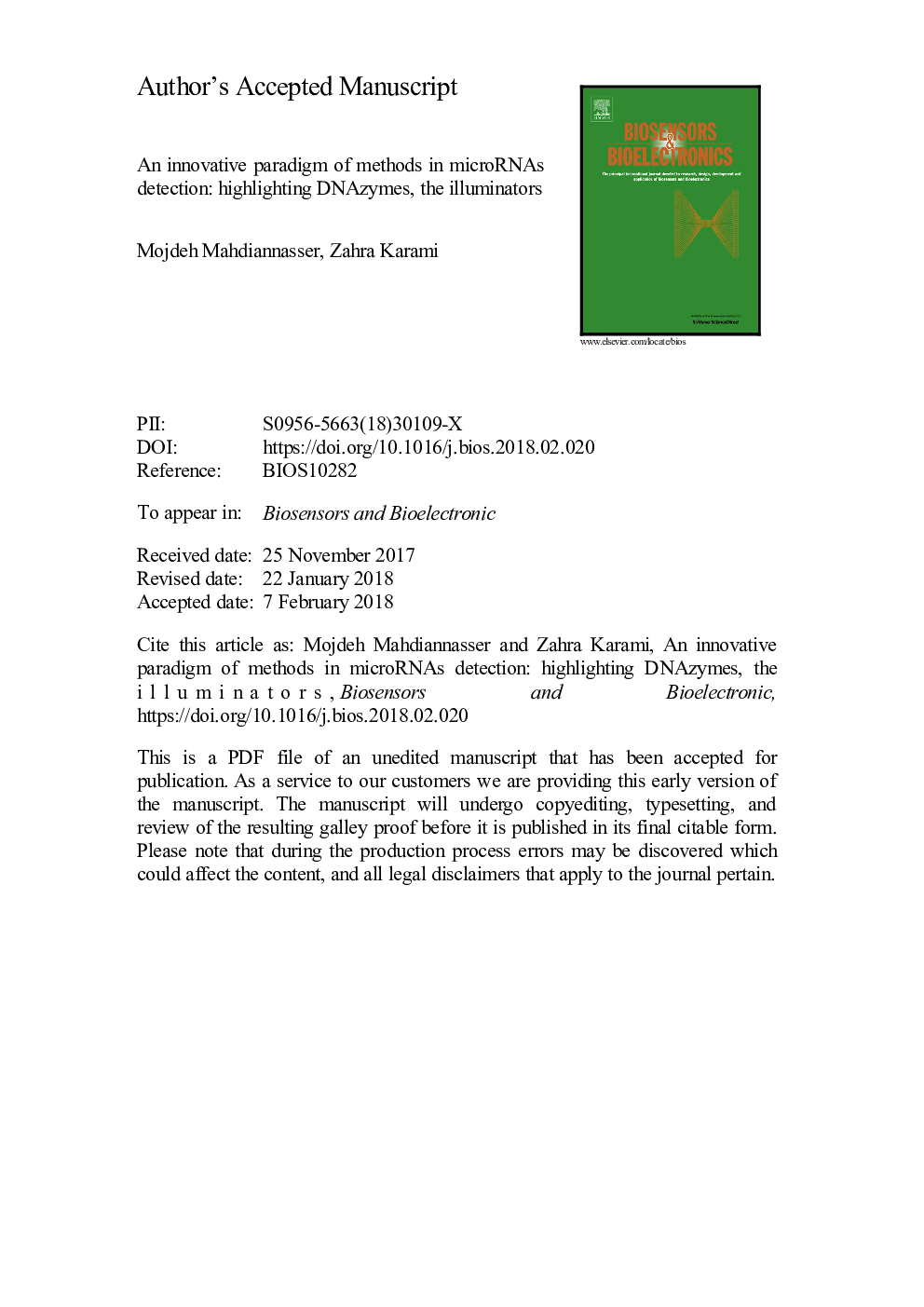| Article ID | Journal | Published Year | Pages | File Type |
|---|---|---|---|---|
| 7229590 | Biosensors and Bioelectronics | 2018 | 64 Pages |
Abstract
miRNAs are short regulatory sequences that monitor gene expression at post-transcriptional level. miRNAs play outstanding roles in cellular processes and their altered expression or aberrant function has been reported in diseases such as cancer. Furthermore, some of them serve as biomarkers for prognosis, diagnosis, and prediction of drug effectiveness as well as probable utility in the field of personalized medicine. As a result, proper and sensitive detection of miRNAs is a crucial matter. Traditional approaches including Northern blotting, Microarray, and Quantitative reverse transcription polymerase chain reaction have been extensively employed by means of miRNA detection for decades. However, these methods lack sufficient sensitivity, specificity and are labor intensive. In the recent years, DNAzyme-based assays have become strikingly attractive. The principal element in these techniques is a G-rich sequence, called the G-quadruplex, which turns into a DNAzyme with catalytic activity by addition of hemin, and subsequently allows simple and rapid detection of the target. In this review, different methods of miRNA detection, along with related advantages and disadvantages are discussed, with a special focus on DNAzymes and DNAzyme-derived methods.
Related Topics
Physical Sciences and Engineering
Chemistry
Analytical Chemistry
Authors
Mojdeh Mahdiannasser, Zahra Karami,
